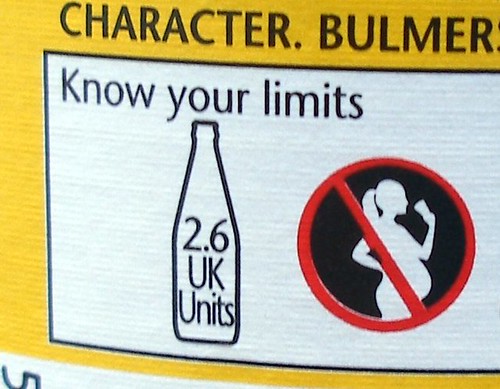When media discusses election integrity the focus is often on an issue that provides good photo opportunities. The long lines at some polling stations in particular receive special attention and discussion. To be sure, long lines and vote suppression more generally do interfere with how well elections take an accurate measure of public sentiment so the attention is justified. Elections should be judged on that wider topic of how accurately they measure public sentiment. To be sure, low voter turnout corrupts the vote-count as a measure of public sentiment, but so does the use of an inadequate system of voting.
In principle, adopting a better voting system would seem to provide a clearer path for improvement than eliminating vote suppression; with that easier approach there is no need to correct the behavior of the many bad actors who might seek to gain some unfair electoral advantage. All it takes is to find a great alternative voting system and adopt it. That would not necessarily be easy and it would still leave room for improvement, but it could greatly improve the democratic character of elections. And perhaps if people gained more confidence in elections some would find it harder to find justification for cheating.
But we persist in using plurality voting, despite its well-known flaws. When, as in our primaries, there are more than two candidates, it is hard to imagine a worse choice; it is a system that only allows voters to specify, among the candidates, their top choice and that is just not enough information to make a good decision. Such a poor choice for a voting system might be expected to discourage voting, particularly in primaries. But limiting voters to choosing between only two candidates also has a corrupting influence on democracy, if only because of voters who like neither of the two candidates.
Plurality voting, because it so strongly favors famous candidates, generally from the largest political parties, makes it nearly impossible for third parties and independent candidates to compete. And other voting systems that have been widely promoted offer only limited improvements in this respect. These familiar voting systems share the oversight of measuring only support for candidates. Nonetheless, it is not unusual for someone to proclaim to be voting against one or another candidate. But their promise to vote against a candidate is only an expression of what they would like to do. Though they want to vote against some specific candidate, that is not an option offered on their ballot. Their actual vote will simply be to support some other candidate; this is a strategic vote that may well be a lie. So far as the vote tally for the candidate they oppose is concerned, this has the same effect as not voting at all and when people realize this, some just don't bother to vote.
Aside from those who have followed this series of articles, relatively few people have ever even heard of balanced voting systems. These are the voting systems that provide the option of voting in opposition. More precisely, these systems are characterized by allowing voters to express with equal ease, opposition or support. In order for them to distinguish opposition from indifference, voters must also have an additional (don't care) option such as by abstaining. The fundamental motivation for these systems is to allow voters to express explicitly (as opposed to strategically) how they feel.
How well a voting system facilitates voter expression is critically important for taking an accurate reading of voter sentiment. Use of voting system that prevents voters from expressing their opinions will likely depress voter turnout. But failure in that regard might also prompt some voters to turn to some form of strategic voting (lying about an actual preference in furtherance of some strategic objective). Despite the limitations of the voting system, these voters seek to express themselves through some attempt at clever voting. That voters feel forced to adopt such tactics is indicative of a defect in the voting system that prevents a voter from explicitly expressing their true opinions.
Balanced approval voting (BAV) stands out as particularly expressive among the balanced voting systems because it inherits all of the significant advantages of approval voting. BAV, just like approval voting, allows voters to treat similar candidates precisely the same. Additionally, being balanced, BAV also allows voters to indicate opposition just as readily and conveniently as to indicate support (and just as with approval voting, they can indicate abstention simply by not specifying either support or opposition). This is a powerful combination; BAV is an especially attractive voting system because its adoption would almost certainly put an end to the two-party system. The limitation to only two viable candidates would seem to be a major driver of the excessive political polarization that we now experience, so the promise of tamping down that excessive polarization surely makes BAV a very attractive alternative.
But might BAV suffer in other ways, having some as-yet unrevealed flaw? This is a possibility and it surely warrants continued consideration. Some such concerns that have been addressed in earlier articles but it seems unlikely that these would corrupt election outcomes. For example, because BAV encourages participation of many candidates, voters might become overwhelmed by an excessive number of options. This is not specifically a problem with BAV but more generally a problem with any open multi-party democracy.
Still, it is a reasonable concern. To cite an extreme alternative, if there were a hundred candidates, few voters would be able to take in much information about them all; at best, they could make a reasoned evaluation of no more than a very few, probably no more than fifteen and typically no more than five.
When a voter is asked about a candidate and the BAV voter is not familiar with the candidate, the voter is apt to abstain. When BAV voters abstain, skipping over individual candidates, then in the vote tally these abstentions are simply ignored; fortunately that seems to be exactly the treatment that voters would want and expect. Skipping over these candidates neither harms nor helps the candidate's prospects but leaves the decision about these candidates to other voters who presumably do know something about the candidate and have formed an opinion. Support for this view comes from Latvia.
Latvia uses BAV in the context of proportional representation where there can be many (often more than ten) winners and, as one might well expect, there are often many more candidates than just the winners. Surely it cannot be uncommon for a Latvian voter to encounter some unfamiliar candidates. The Latvian experience supports the view that this concern is not a fatal flaw for BAV. Still, for single-winner elections it seems troubling for voters to be unavoidably but still widely ignorant about many of the candidates. To address this concern it might be helpful to have a preliminary election to narrow the candidates in the final election to a manageable number (five perhaps) for voters and then give voters some time to learn about those few who make it to the final election.
Another criticism that might be directed at BAV would be that it fails to allow a voter a sufficiently fine-grained expression of support or opposition, perhaps half-support and half-oppose would make the system even better. Ramifications of his idea were explored and the idea rejected in an early article of this series. The point made there is that voters are in essence diluting their vote by exercising such half-votes and that voters would come to regret their half-vote of support or opposition when a candidate they truly dislike wins. In time, voters might be expected conclude it to be good strategy to cast these half-weight votes very sparingly if at all.
But in addition to the considerations in that article, we might consider whether there is any significant value in collecting such fine-grained opinions from voters; elections are for evaluating aggregate voter opinion. And with BAV, we do actually determine a detailed measure of aggregate opinion of voters. It seems likely that there are many voters who feel roughly the same about any given candidate, either feeling some support or some opposition. On a given day or hour a particular voter might decide to vote support while at a later time, that same voter might come down on the side of abstaining; individual opinion is a continuously moving target. But another voter might well do just the opposite. The group as a whole will on any given day come down somewhere in the middle and that aggregate level of support or opposition is apt to be more stable. But that measure of aggregate support determined by the BAV tally could fall essentially anywhere between outright opposition and full support; it certainly is not limited to just one of three different values. This observation was noted in another article last year.
One more objection that sometimes is raised about BAV is that it is just too complicated. I admit to sympathy for keeping voting a simple matter, but simplicity comes in different forms and BAV is especially simple in a particularly vital area. While with BAV, ballots are more complicated than with approval or plurality voting, they are decidedly less complicated than for ranked-voting systems. Vote tallies are simpler with plurality voting but vote tallies with BAV are considerably simpler than with instant-runoff voting (sometimes now called ranked-choice voting). But the more important view of simplicity would seem to be from a voter's perspective. For a voter, the greater freedom of expression would seem to make BAV the simplest of these different styles of voting. The can simply describe his actual opinions, unencumbered by strategic considerations.
BAV is not the only balanced and evaluative voting system and yet another balanced voting system is, from a voter's perspective, a simplification over BAV. Yet from a voter-satisfaction standpoint as well as from an administrative standpoint, the system could be found objectionable. In addition it assumes a quite large pool of voters so it would not be suitable for all situations.






